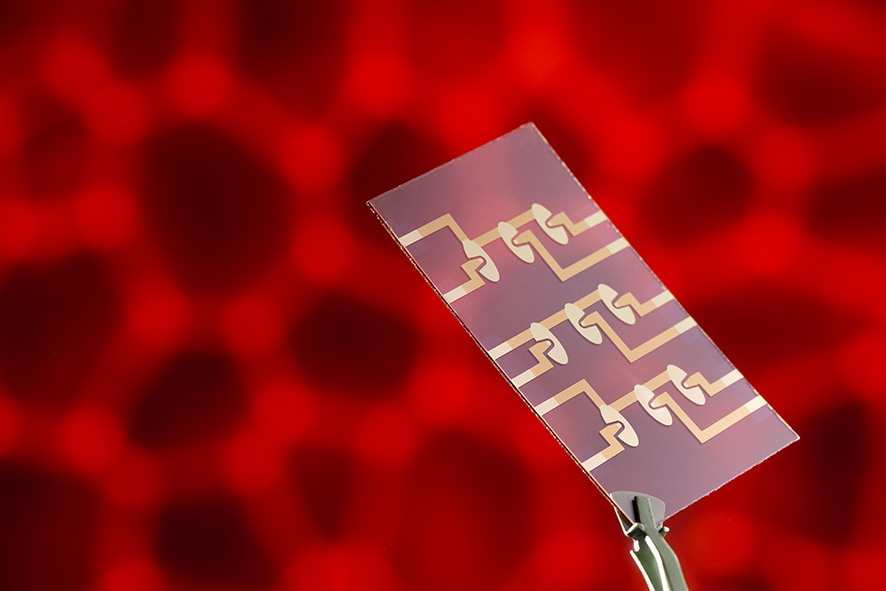Press briefing
New approach in the fight against viruses
In the ViroSens project, researchers from the Fraunhofer-Gesellschaft in Regensburg and Sulzbach are working together with industrial partners on a novel analytical method to make the potency testing of vaccines more efficient and cost-effective. The method combines electrochemical sensor technology and biotechnology and, for the first time, enables a completely automated analysis of the infection status of test cells.
Most people see vaccinations as a major achievement of modern medicine, as they protect against dangerous viral infections. However, before a vaccine is given to patients in the doctor‘s surgery, it is first tested for its effectiveness in order to ensure reliable protection. These tests are typically carried out in the laboratory on cultured cells. First the blood serum of a previously vaccinated person is injected into the cell culture, then the test cells are exposed to a virus load. If the vaccination was successful, the serum contains sufficient neutralising antibodies against the viruses and the virus encounter has no impact on the cells. This serves as a proof of the efficacy of a vaccine. If the vaccination was not efficient enough, the antibody titres in the serum are not sufficient to completely intercept the viral load. The cells used for the test are then defenceless against the viruses and are infected.
To date, a possible infection of the test cells is analyzed using labour-intensive and expensive staining methods which have an increasingly limiting effect in view of the enormous number of tests required for vaccine development.
Scientists of the Fraunhofer Institute for Biomedical Engineering IBMT in Sulzbach/Saar and the Fraunhofer Facility for Microsystems and Solid State Technologies EMFT on the campus of the University of Regensburg are currently working together with the companies nanoAnalytics GmbH (Münster) and innoMe GmbH (Espelkamp) to provide a novel solution for the measurement of antiviral neutralizing antibodies. For this purpose, the test cells are placed on multi-electrode arrays, which allow their infection status to be recorded completely automatically applying electrochemical measuring methods. This replaces the costly staining reactions of conventional tests, which saves time and money.
Another advantage of the new method is that the cells are continuously monitored over the entire incubation period. With the previously used staining methods, they are only analysed at a specific endpoint in time. This provides the researchers with additional information on the time course of the cell reaction that was previously not available. The consortium is aiming for a complete system, including the measuring device, the associated analysis software and the electrode arrays required for cell observation, and implementing it in laboratory set-ups that will pave the way for a later market launch. The „ViroSens“ project is funded by the Federal Ministry of Education and Research (BMBF) under the KMUinnovativ funding guideline with a total amount of around €2 million.
Last modified:
